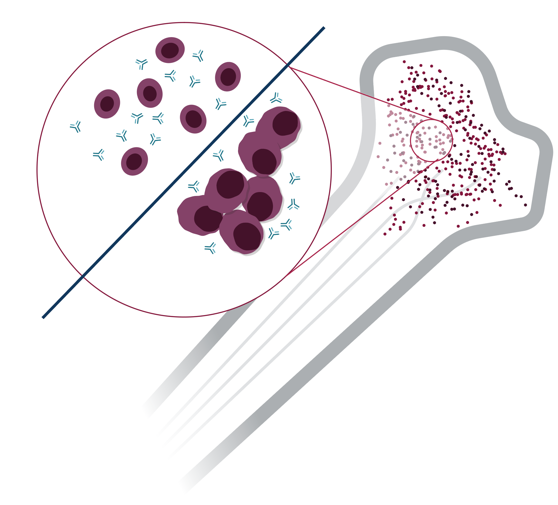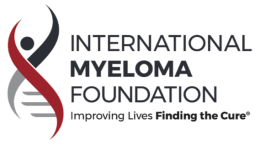How Multiple Myeloma Impacts the Body
Multiple myeloma affects the places where bone marrow is active in an adult. Most common sites include the bones of the spine, skull, pelvis, rib cage, and the areas around the shoulders and hips. Read more about its risk factors and how the disease impacts each of the following:
The Course of the Disease
When the disease is discovered, there is much to learn and be aware of:








Myeloma is a cancer of the plasma cells in the bone marrow. The malignant plasma cells, or myeloma cells, accumulate in the bone marrow.
A solitary plasmacytoma is a localized tumor composed of plasma cells. It can grow inside bone, or intramedullary. It can also grow outside bone, or extramedullary or in the soft-tissue. Multiple myeloma occurs when there are multiple plasmacytomas inside or outside bone. When patients with myeloma have disease outside the bone marrow, this is called “extramedullary disease” (EMD).

Learn all of the terms that are frequently used when living with and being treated for multiple myeloma.
Resources & Support

Dr. Sigurdur Kristinsson gives the first results of the Iceland wide iStopMM study.
The International Myeloma Foundation medical and editorial content team
Comprised of leading medical researchers, hematologists, oncologists, oncology-certified nurses, medical editors, and medical journalists, our team has extensive knowledge of the multiple myeloma treatment and care landscape. Additionally, Dr. Brian G.M. Durie reviews and approves all medical content on this website.











